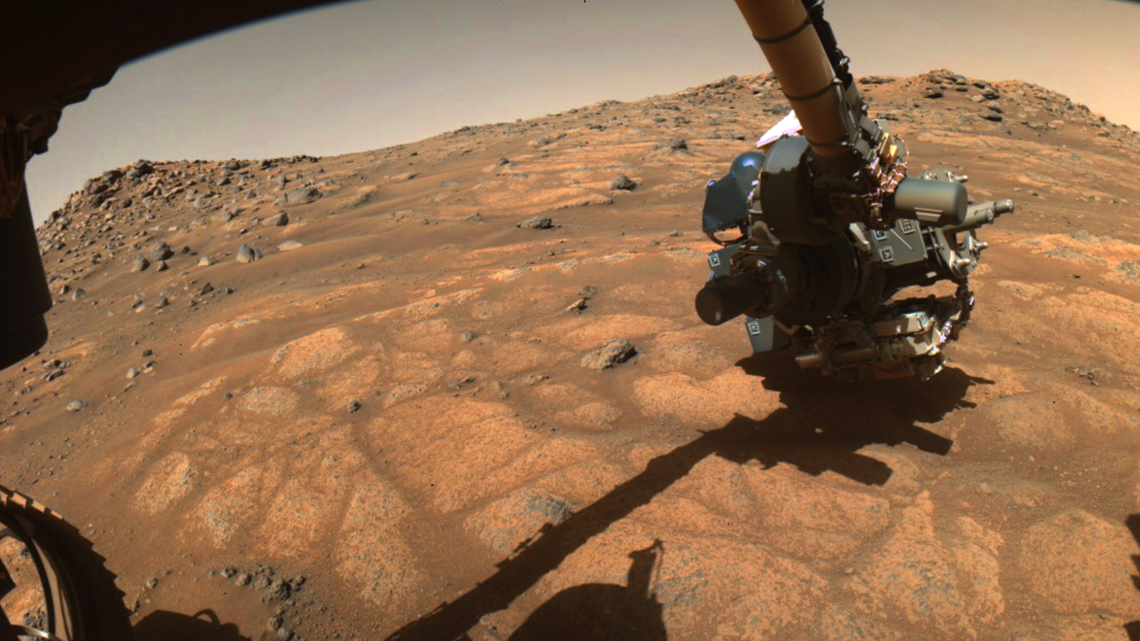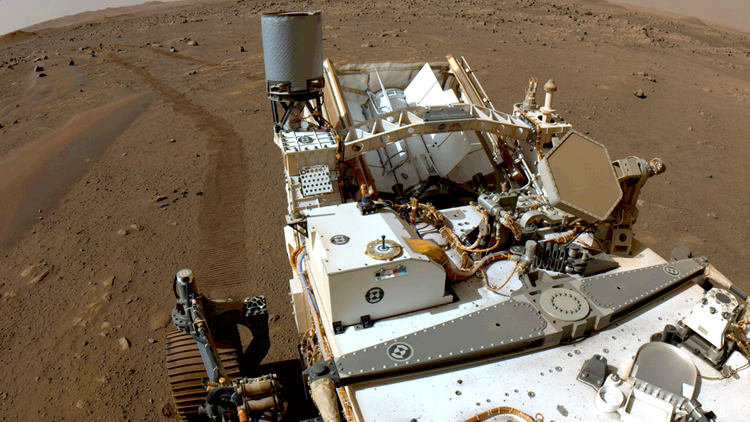PASADENA, Calif. — After spending about five months exploring Mars' surface, the 2020 Perseverance rover is getting ready to collect the first-ever Martian rock samples planned to return to Earth.
“We are ready to sample,” Perseverance Rover Project Manager Jennifer Trosper said Wednesday during a press briefing.
The rover is currently searching the Cratered Floor Fractured Rough site at Jezero Crater for an interesting target rock, according to NASA.
From there, three additional samples will be collected as part of the rover's first science campaign. Onboard the "six-wheeled geologist" are 42 sample tubes, five of which are witness tubes, that are ready to collect, seal and store Martian samples in the rover's belly.
NASA says those samples will come from a range of locations, with the first estimated to be taken within the first few weeks of August. The two additional areas the rover will complete a "very thorough exploration" of are called Seitah-South and Raised Ridges.
Once Perseverance identifies the exact rock it is looking to sample, within its workspace, the rover will remove the dust or surface coating. From there it will use a bit to core into the rock before retrieving and processing the sample.
The entire process is reported to take 11 days since the rover's Sampling and Cache System is receiving instructions from hundreds of millions of miles away.
As for what the space agency is looking for? It says it wants rocks that are "prototypical" and can summarize and record the planet's history. The texture, chemistry and mineralogy of the rock sample also come into play, according to Perseverance Science Campaign Co-Lead Vivian Sun.
“Not every sample Perseverance is collecting will be done in the quest for ancient life, and we don’t expect this first sample to provide definitive proof one way or the other,” said Perseverance project scientist Ken Farley.
“While the rocks located in this geologic unit are not great time capsules for organics, we believe they have been around since the formation of Jezero Crater and incredibly valuable to fill gaps in our geologic understanding of this region – things we’ll desperately need to know if we find life once existed on Mars," he added.
Even though this is an exciting time for scientists to more complexly learn about another planet in our solar system, don't expect to see the samples in a lab anytime soon.
The earliest NASA Associate Administrator of Science Mission Directorate, Thomas Zurbuchen says a recon mission to collect the samples from Mars can take place is in 2026. From there, the successful transfer of the Martian rocks still would not reach Earth until the early 2030s.
“Exploration is not a sprint. It’s a marathon,” he said.
Additional research conducted on the red planet has captured the occurrence of dust devils, a similarity between rocks found on Mars to those here on Earth and evidence of a lake, much to experts' delight.
“Comparisons can be drawn, you know, from what we can see currently on these Crater Fractured Floor Rough rocks. It can be drawn to various rocks on Earth kind of in both settings," Sun said.


Overall, NASA hopes Perseverance will collect samples that help open a new era of planetary scientific discovery as the push to — eventually — be able to get humans to Mars still remains.
“When Neil Armstrong took the first sample from the Sea of Tranquility 52 years ago, he began a process that would rewrite what humanity knew about the Moon,” Zurbuchen said. “I have every expectation that Perseverance’s first sample from Jezero Crater, and those that come after, will do the same for Mars. We are on the threshold of a new era of planetary science and discovery.”
- Red tide can impact your pet's health: Here's how to protect them
- 'This is a matter of life and death:' Pharmacist says rural areas still struggling to get vaccinated
- Current COVID surge in Florida not due to ‘seasonal pattern’ of virus
- 'You understand that, Mr. President': Brady jokes with Biden about people not thinking they won
- DOJ: Tampa Oath Keepers member pleads guilty in Capitol insurrection case
- A Frank Conversation: New podcast explores race, religion, politics and more
►Breaking news and weather alerts: Get the free 10 Tampa Bay app
►Stay In the Know! Sign up now for the Brightside Blend Newsletter



